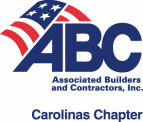Construction attorneys learn early on that there are two forms of “construction management” – “pure” construction management, where the construction manager is an agent of the owner (“CM-Agency”); and construction management “at-risk,” where the construction manager is legally responsible for delivering the project on-time and on-budget (“CM At-Risk”). A CM-Agent helps the owner manage/make critical decisions about a project, but does not actually commit to delivering the project on-time or on-budget, and does not enter into subcontracts with trade contractors. Compare the CM At-Risk, who is “at risk” to the owner for the project schedule and cost and also “at risk” to the subcontractors for timely payments down the chain.
Seems simple enough. But what does this distinction actually mean in the real world? I recently stumbled upon this concise, helpful article from a representative of Holder Construction in Atlanta clarifying the practical differences between CM-Agency and CM At-Risk. The article emphasizes that CM-Agency is a method for managing a construction project, while CM At-Risk is a project delivery system (competing with other methods such as single prime, multi-prime, design-build, etc.). That distinction is critical, and demonstrates that comparing CM-Agency and CM At-Risk is a lot like comparing apples and oranges.
Assume you’re an owner in the early stages of planning a new project and assembling the project team. Maybe you don’t have in-house staff with construction management experience, or maybe (if you’re REALLY fortunate in these difficult times) you have multiple projects to manage but insufficient staff to handle all the decision-making and day-to-day responsibilities those projects entail. You might be in the market for a “pure” construction manager, someone who is in your corner and serving your interests exclusively throughout the project, including hiring the design team, evaluating what industry form contracts to utilize and managing day-to-day construction operations once the shovels hit the dirt.
The CM-Agent can also help you decide early on what project delivery method to utilize. And if the project is on a fast track schedule, requiring timely budgetary input from the builder during the design phase, the CM At-Risk project delivery system might be the CM-Agent’s recommendation. Unlike the CM-Agent, the CM At-Risk is not, from a project relationship perspective, entirely in the owner’s corner. Because it serves as the guarantor of the project’s schedule and budget, the relationship between the owner and the CM At-Risk, no matter how strong the team approach to the project may be, is inherently adversarial.
Viewed in light of this hypothetical, then, CM-Agency and CM At-Risk are not opposites. “CM-Agency v. CM At-Risk” is not an either-or proposition. Project owners should not think in terms of choosing between CM-Agency and CM At-Risk. Instead, and under the right set of circumstances, they can be complimentary project management and delivery tools, utilized together to ensure a successful project.













